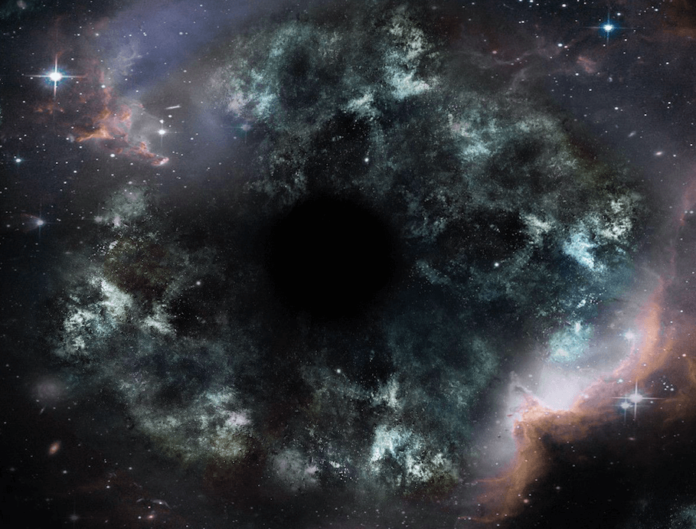Black holes have always been a favorite subject for astronomers. They’re active and play a very important role in how galaxies evolve by consuming material from the galaxy itself. It’s during this phase that an active galactic nucleus (AGN) takes place producing AGN feedback as a result. There are different forms in which this feedback can take. It prevents further galaxy growth by heating, distributing, consuming, and removing the gas needed to make new stars.
AGN feedback is so important that it’s now a requirement of simulations of galaxy formation in order to explain those distant galaxies. If this feedback isn’t accounted for, the predicted number of galaxies would appear much higher when the Universe was younger than those that have been observed.
Studying the way in which nuclear activity affects galaxy evolution is no easy feat, and that’s large because of the different spatial scales and timescales between the two. When it comes to massive galaxies, generally they will host very compact supermassive black holes that will have millions of solar masses in their nuclei. According to prior research, these phases of nuclear activity are said to last just a few million tears whereas galaxy evolution processes take much longer. Therefore, in order to effectively study the connection between them, researchers had to look to the nucleus of the galaxies, where the material that connects them can be found.
The study was led by Christina Ramos Almeida, a researcher at the Instituto de Astrfisica de Canarias (IAC), and Claudio Ricci, an astrophysicist at the Institute of Astronomy of the Universidad Catolica de Chile. Together, they reviewed the current understanding of nuclear obscuration in AGN. “We now know that this nuclear material is more complex and dynamic than we thought a few years ago: it is very compact, formed by gas and dust clouds orbiting the black hole and its properties depend on the AGN luminosity and accretion rate,” says Ramos. “Moreover, it is not an isolated structure but appears connected with the galaxy via outflows and inflows of gas, like streams of material flowing as part of a cycle. This gas flow cycle keeps feeding the black hole and regulates the formation of new stars in the galaxy.”
Just recently the obscuring nuclear material in an active galaxy was imaged for the first time using the Atacama Large Millimeter/submillimeter Array (ALMA). It gives researchers a more clear idea of how this material is distributed as well as its shape and size. “Over the next decade, the new generation of infrared and X-ray facilities will contribute significantly to our understanding of the structure and physical properties of the nuclear material,” confirmed Ricci.
More News to Read

